The Cab
As we mentioned, this cab is a bit different from the cabs we built for the Hot Rod DeVille. For one thing, this one has a sealed back speaker compartment. Also, we have wanted for some time to be able to use finger joints for the cab corners, and I finally got a jig that enables us to do that.
First, we drew up a sketch of the basic cab based on info on the size of the original Crate cab. We ended up changing some of the dimensions a bit for various reasons, but here is the original sketch. As can be seen here, this will require a shelf between the speaker and the chassis in order to seal the speaker compartment.
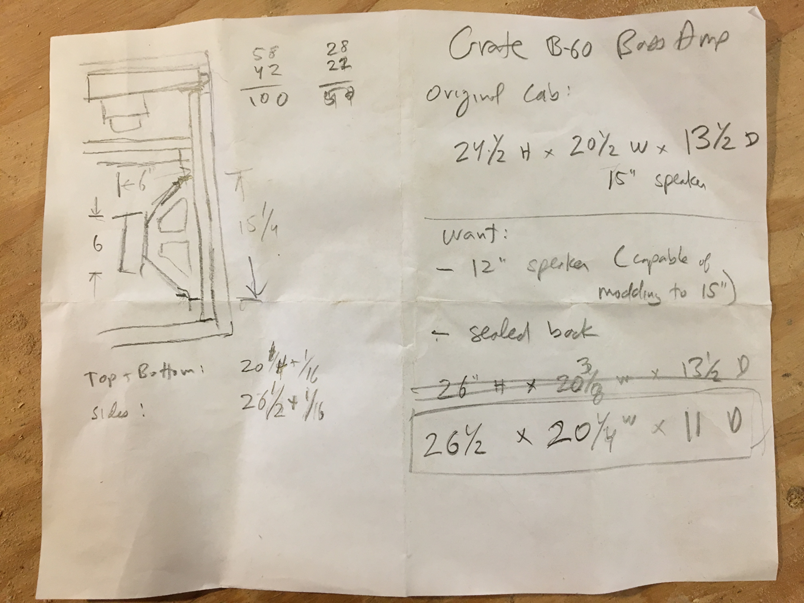
Original rough sketch of cab
Our cab ended up being a bit taller, and a bit shallower than the original dimensions. First, we couldn't figure out how the shelf worked in the original cab, given the height of the chassis and the 15" speaker. Also, we wanted to be able to run the sides, top, and bottom boards through my 12" planer. So, we ended up with a taller cab that is less deep than the original Crate cab. We hoped the sealed speaker compartment is close enough volume wise for the 15" speaker we would be using...
We also decided to have some fun with the cab by giving it a mahogany stripe in the pine cab. We ripped up some mahogany left over from a deck project into 3" strips and glued them up with some pine boards (using a biscuit joiner). The resulting boards were then ripped to 11" as accurately as possible in order to keep the mahogany strip in the same location on all of the boards.
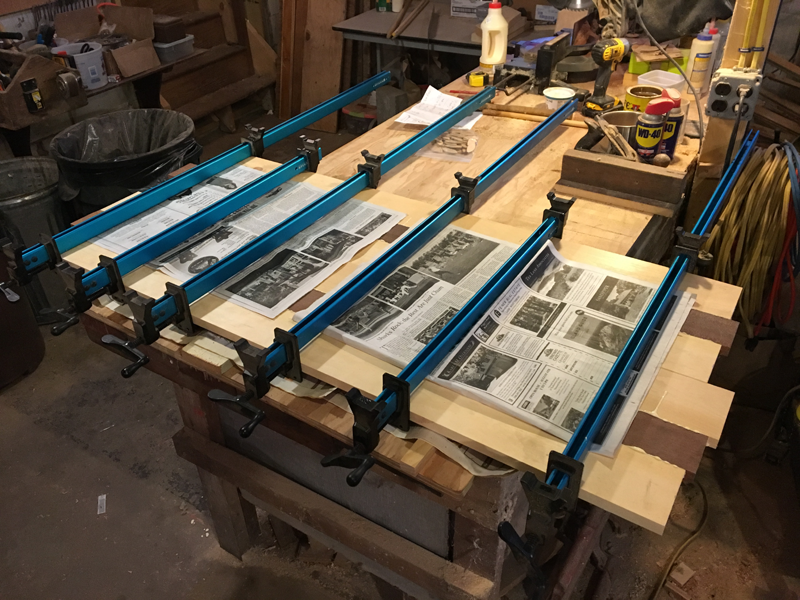
Gluing up the pine and mahogany boards
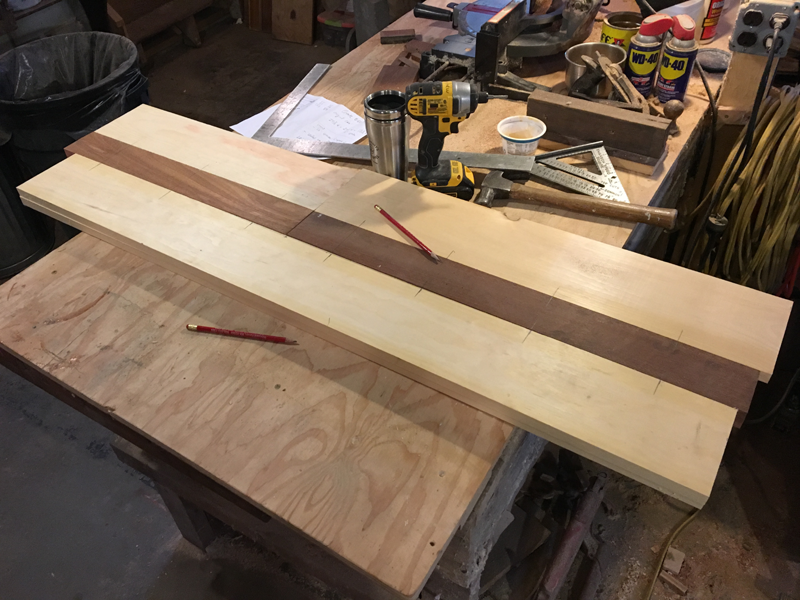
Gluing up the pine and mahogany boards
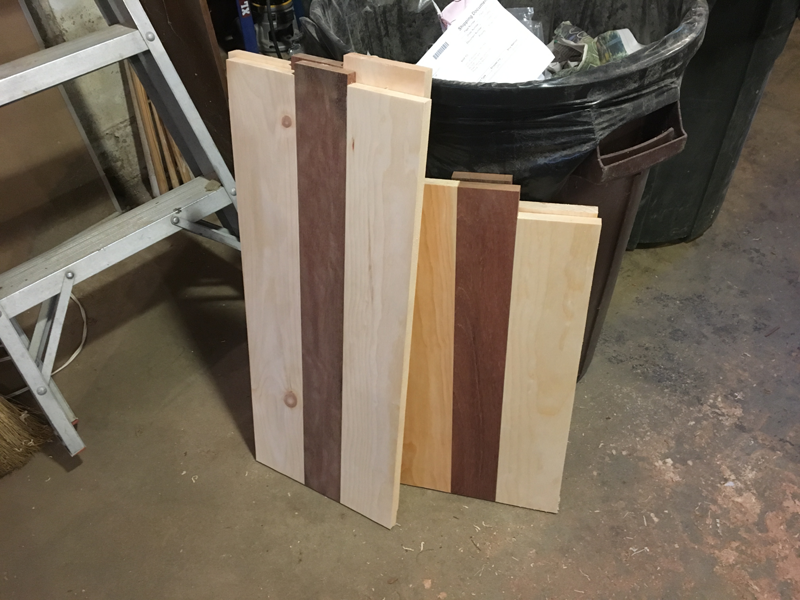
2 sides, top and bottom boards
At this point, it was time to learn how to use the finger joint jig. We recently got one of the INCRA I-Box jigs, and so far, we really like it (once we figured it out). It can be used on either a router table or a table saw. First thing we did was practice by making a simple box from some scrap.
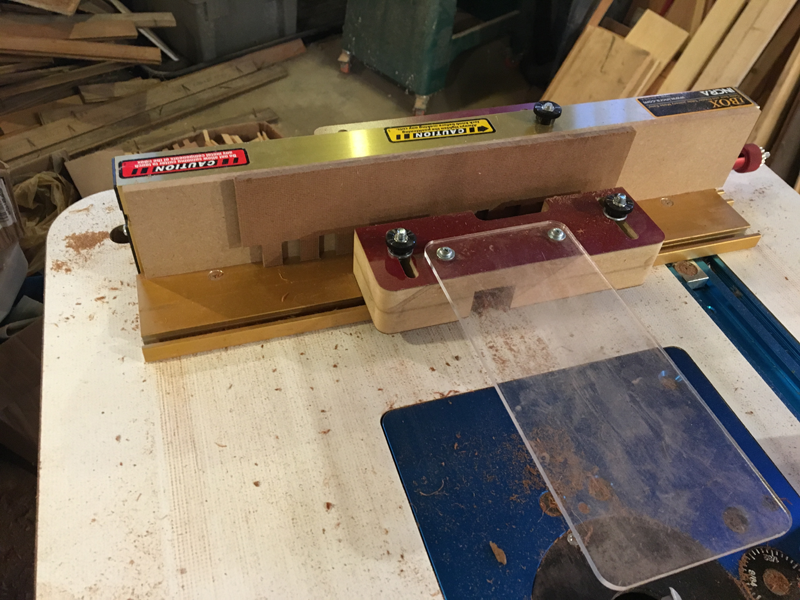
INCRA I-Box jig setup on my router table
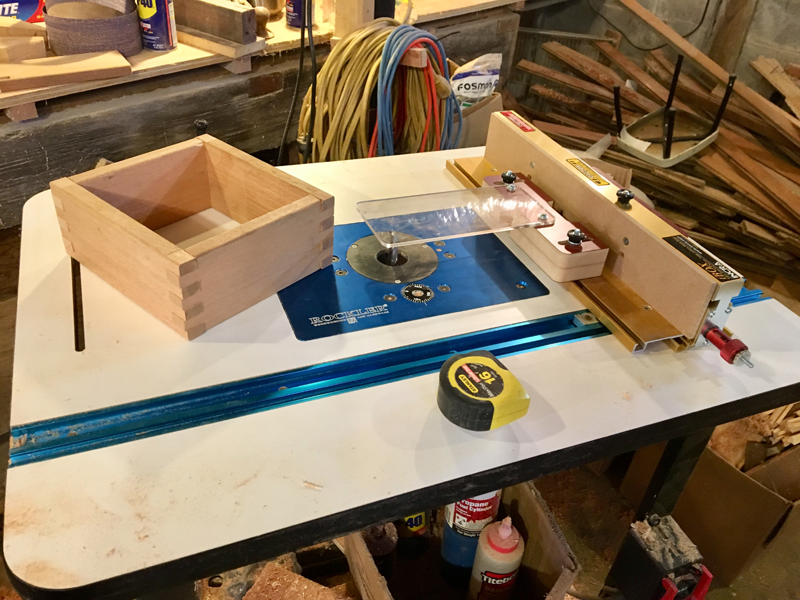
Practice box with finger joints
For our cab, we ended up using a setup that produces a joint called a 'Center Keyed Box Joint'. This technique results in symetrical fingers no matter what the width of the boards are (in relationsip to the finger width). It results in a (usually) larger finger in the middle. While cutting the fingers, we used painters tape, and a backing board on the back side of the work piece, to help prevent blow out on the back of the cuts. Here are some pictures of the process:
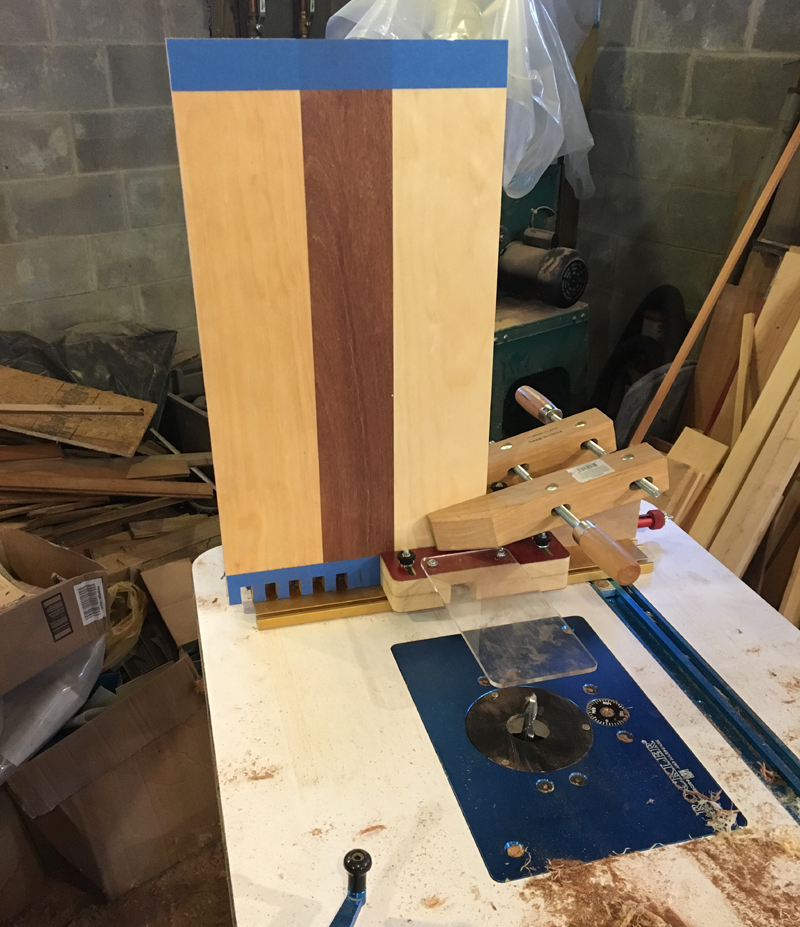
Side board clamped in finger joint jig
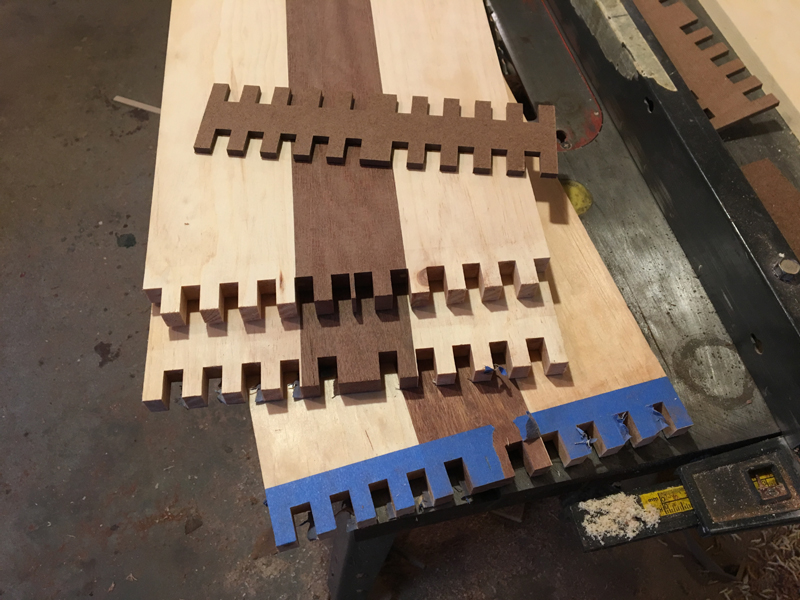
Finger joints showing center key and a used backing board
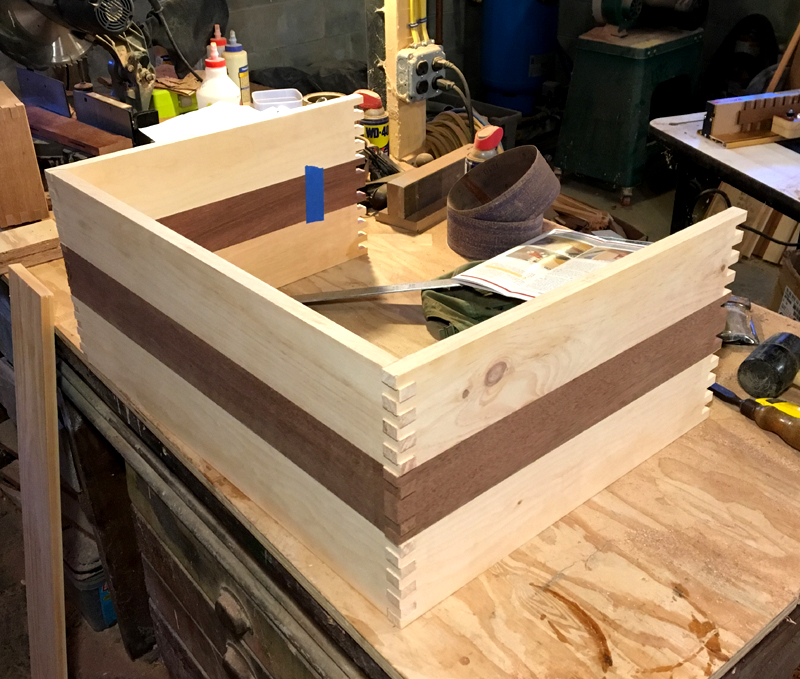
Test fitting the pieces
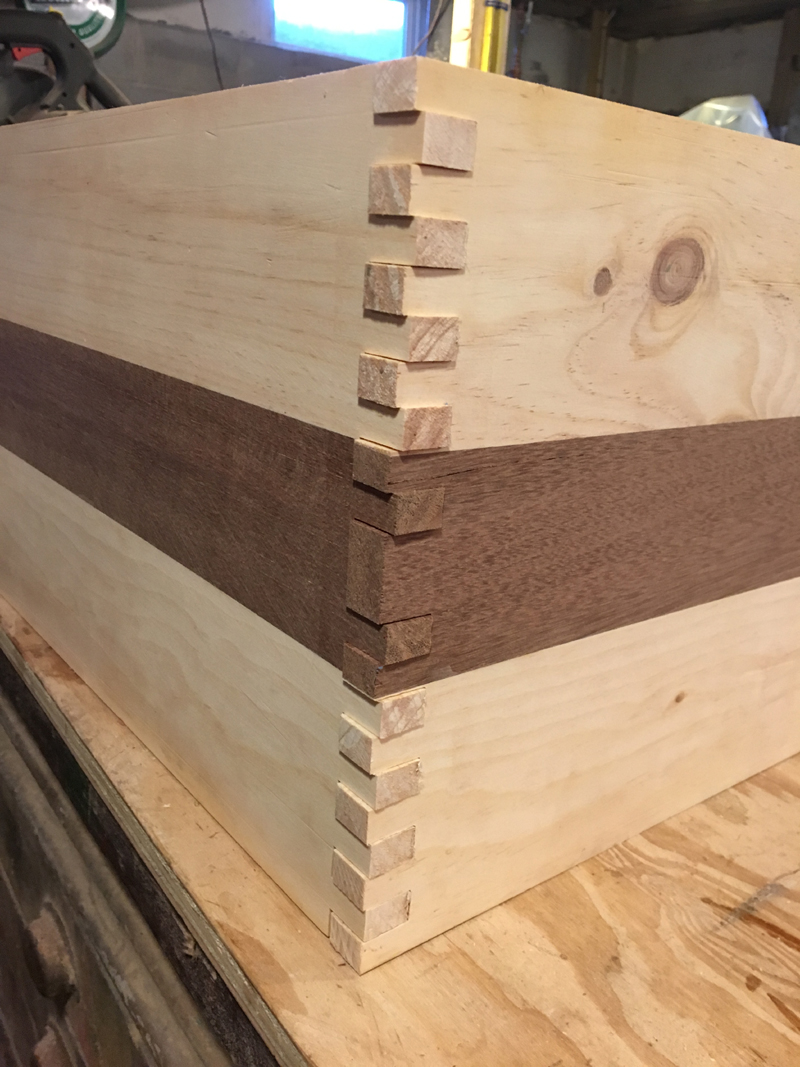
Close up of one corner (not glued yet)
We screwed up one of the side pieces (learning curve!), so had to make a new piece for the second side. We were able to use the bad one for the shelf later, so, no loss.
Once we were happy with the fit, it was time to glue it all up. We mocked up the entire clamp setup first, then glued it up.
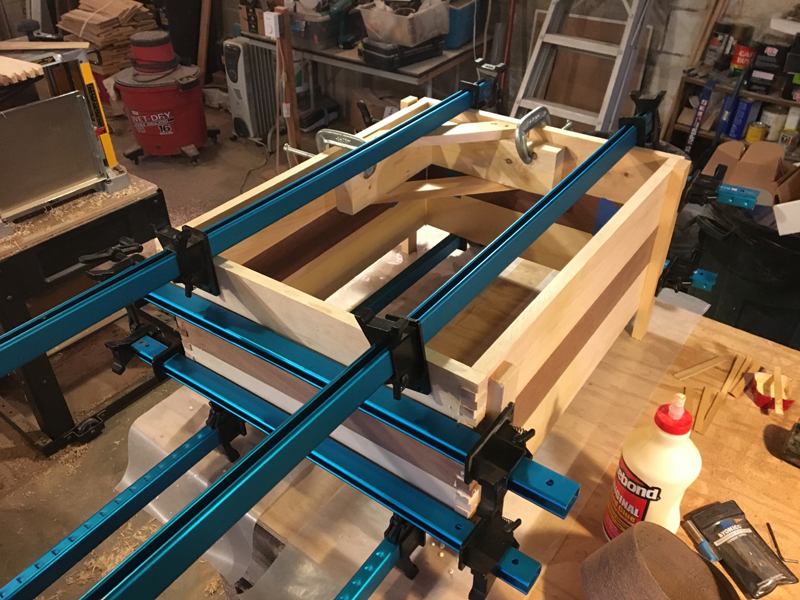
Clamp mock up
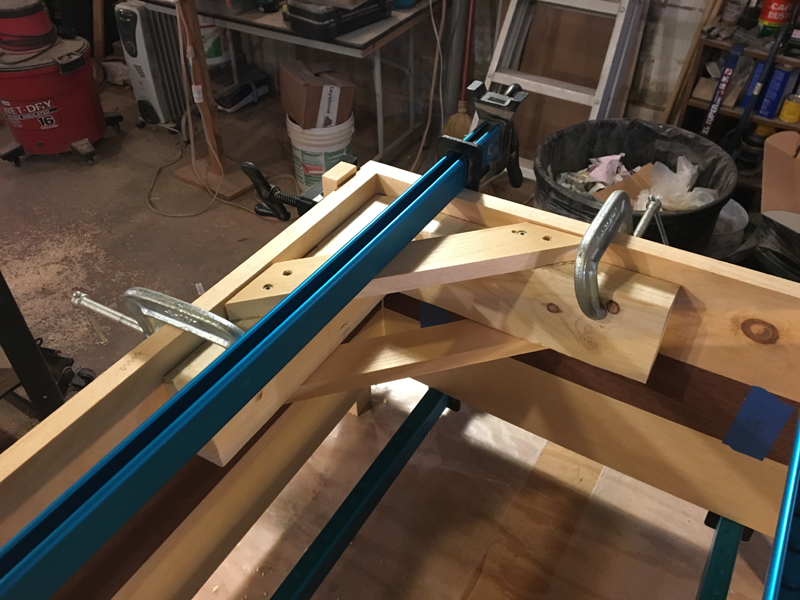
Detail of right angle jig we made to keep it all square
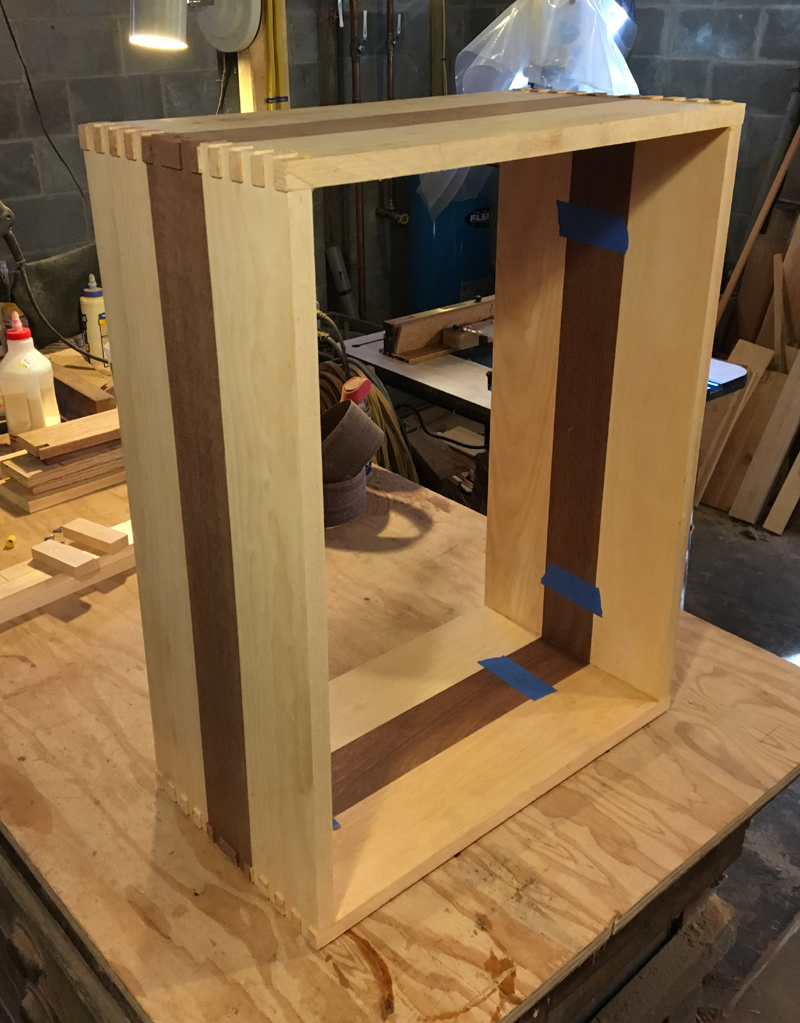
Box after the glue was dry
Once the glue was dry, we sanded the corners, and proceeded with installing the shelf and strips to hold the baffle board and back.
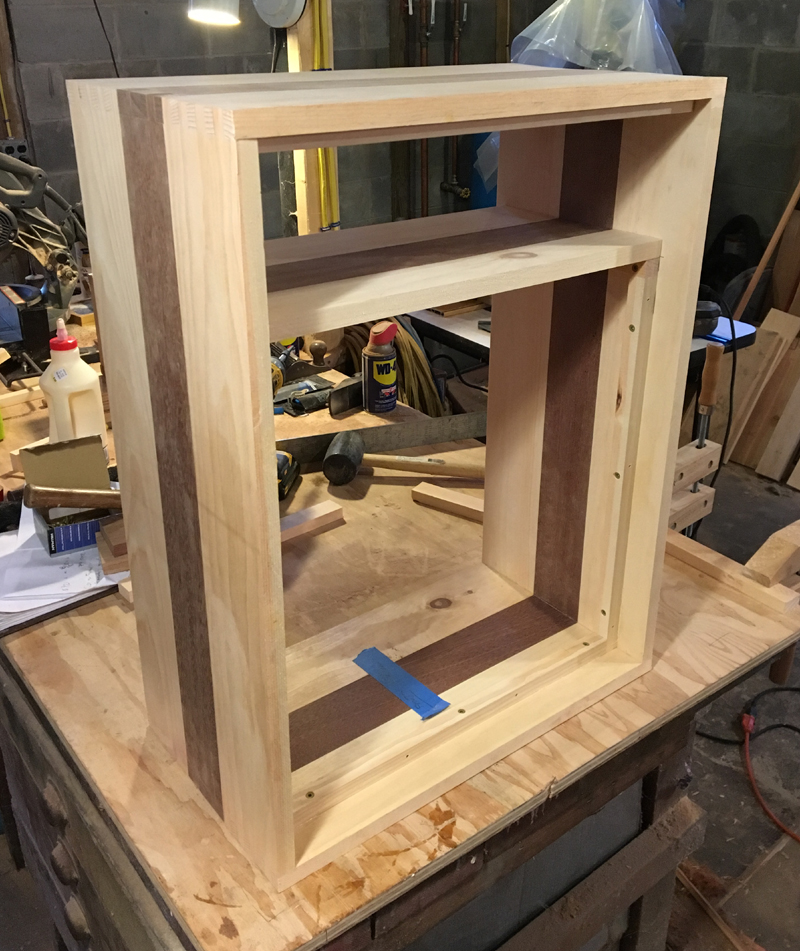
Shelf between chassis compartment and speaker compartment
Then the baffle board, with the hole for the 15" speaker, and the back panel. The baffle board is 3/4" void free birch plywood. The back is birch plywood as well, but, for weight considerations, only 3/8" thick, so we glued a 3/4" x 2" strip down the middle to stiffen it up.
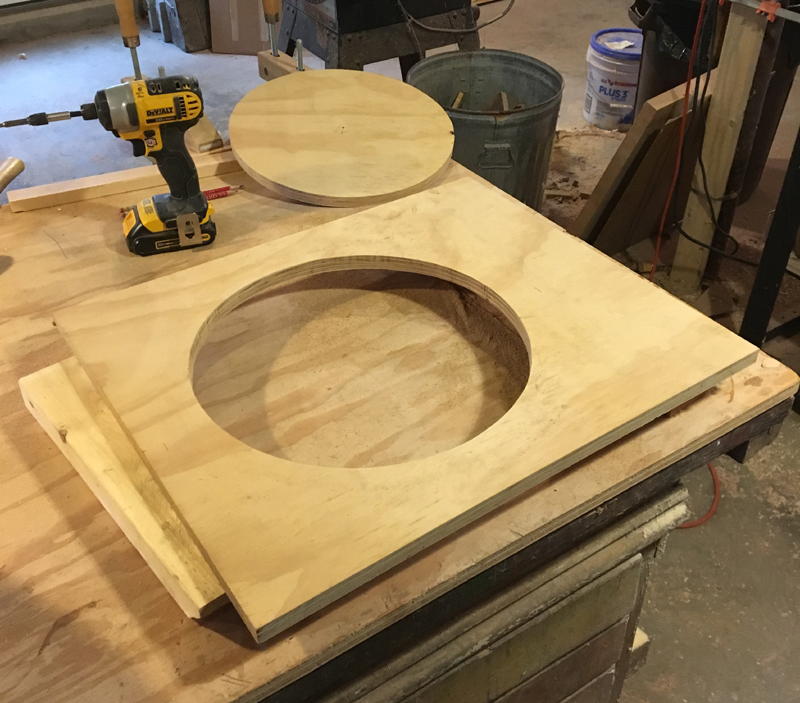
Baffle board with speaker hole
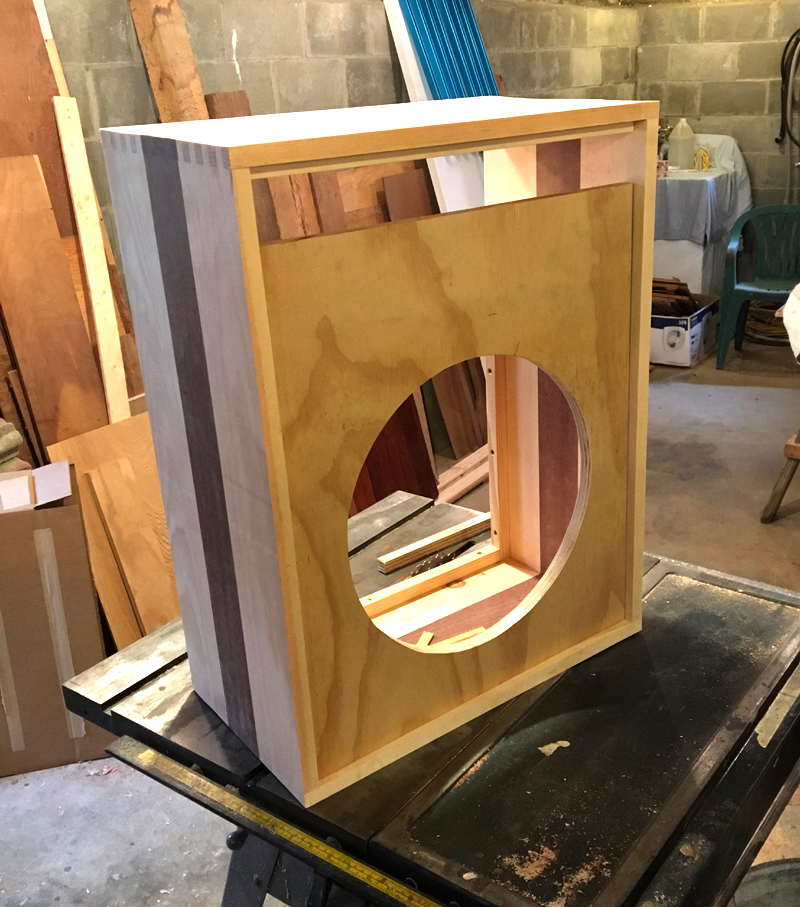
Baffle board in place (mock up)
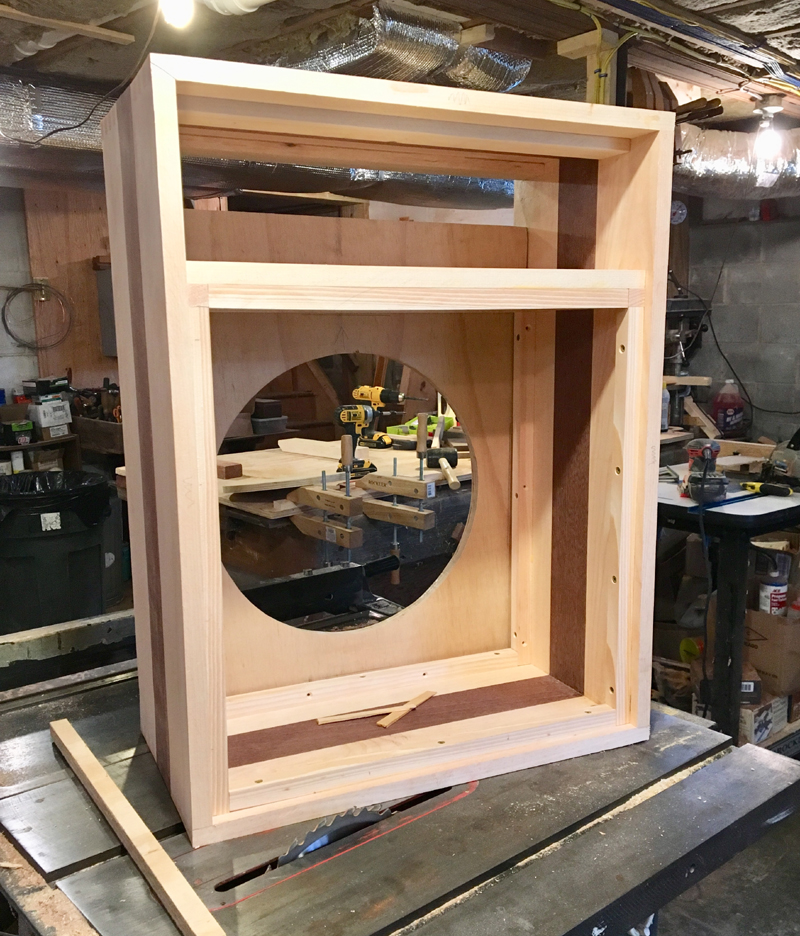
Baffle board in place (mock up)
In the above two images, you can also see a 3/8" spacer we added to the bottom of the top piece to bring the chassis down a bit. Hopefully, this will make it a little easier to see the knobs, as the chassis will be recessed a bit to protect them.
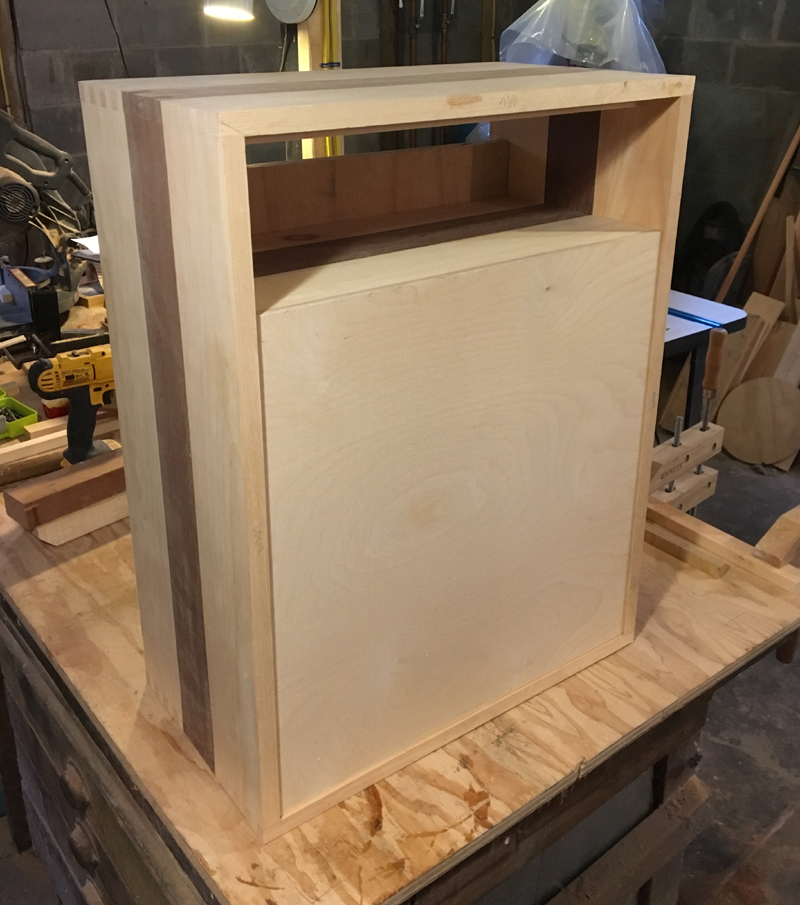
Back panel in place (mock up)
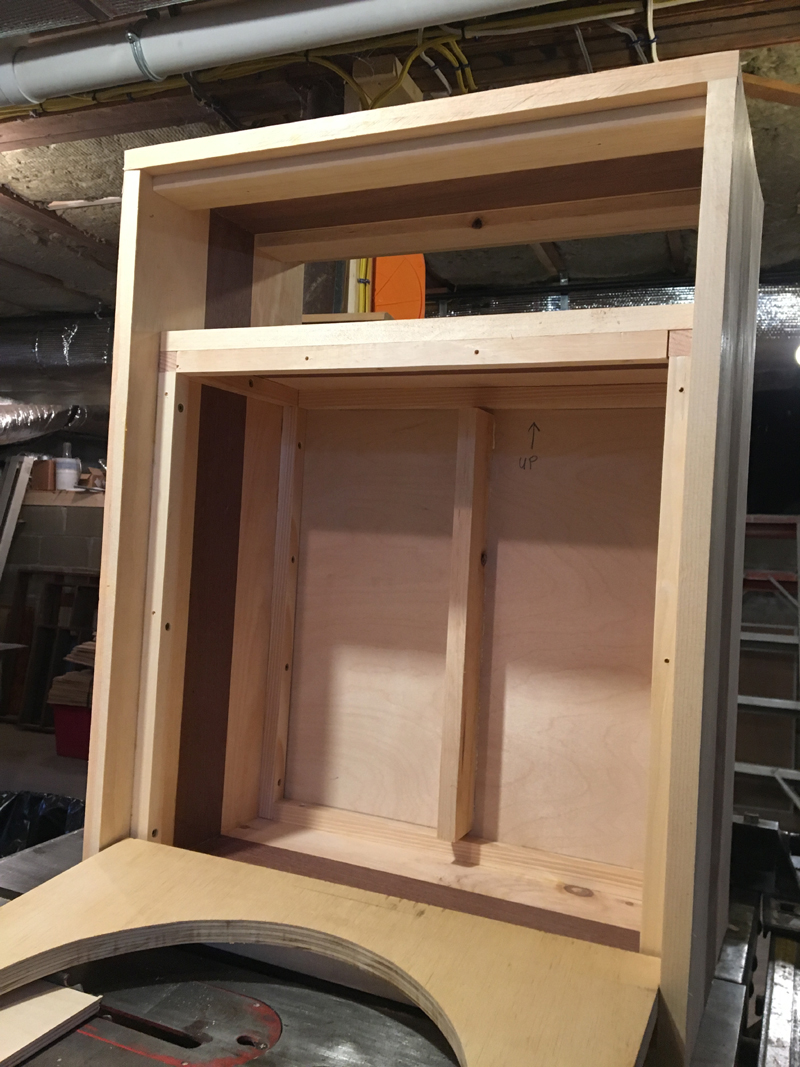
Back panel showing reinforcing strip
And here is a mock up with the chassis in place.
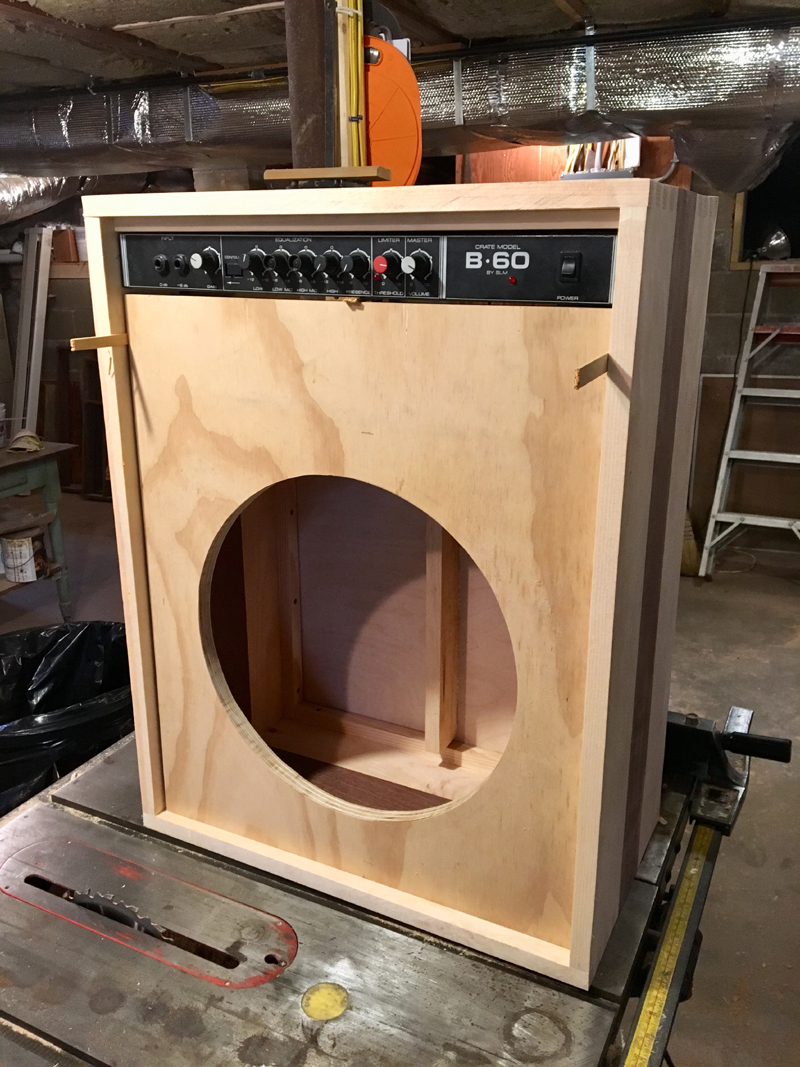
Mock up with chassis (front)
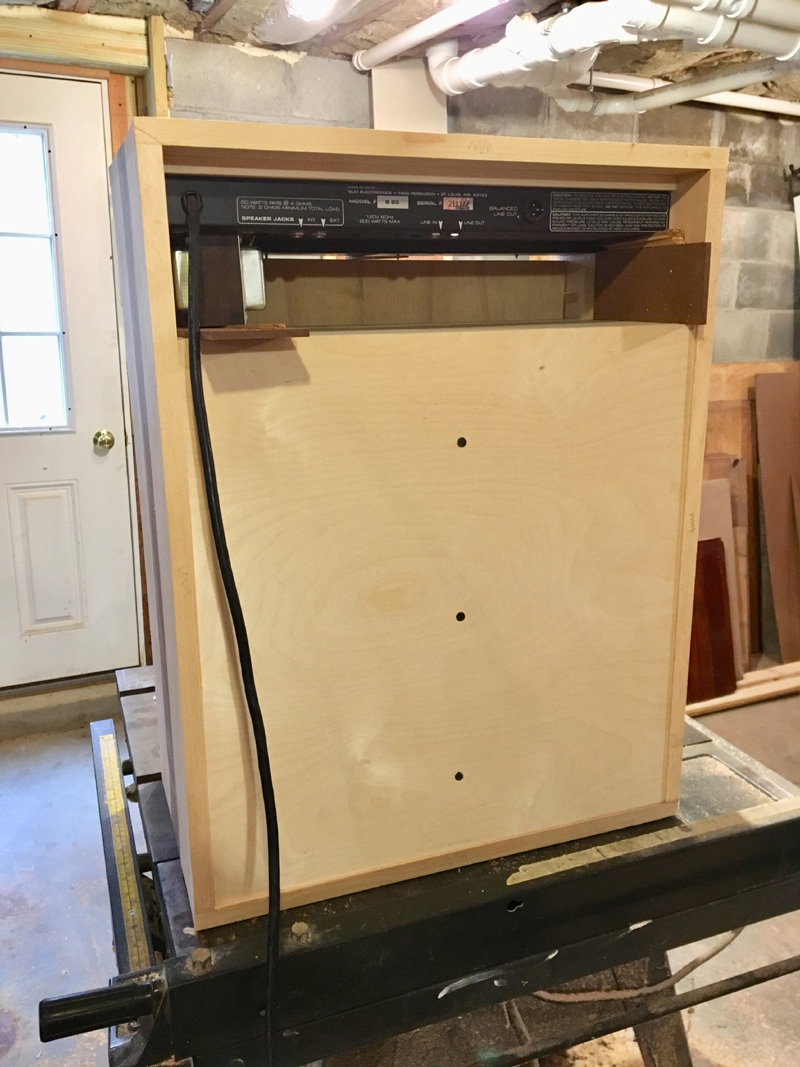
Mock up with chassis (back)
We drilled holes and mounted 8 T-nuts (hurricane nuts) to the baffle board for the speaker mounting bolts. The bolts will be trimmed in order to engage the nuts, but not protrude and poke at the speaker grill cloth.
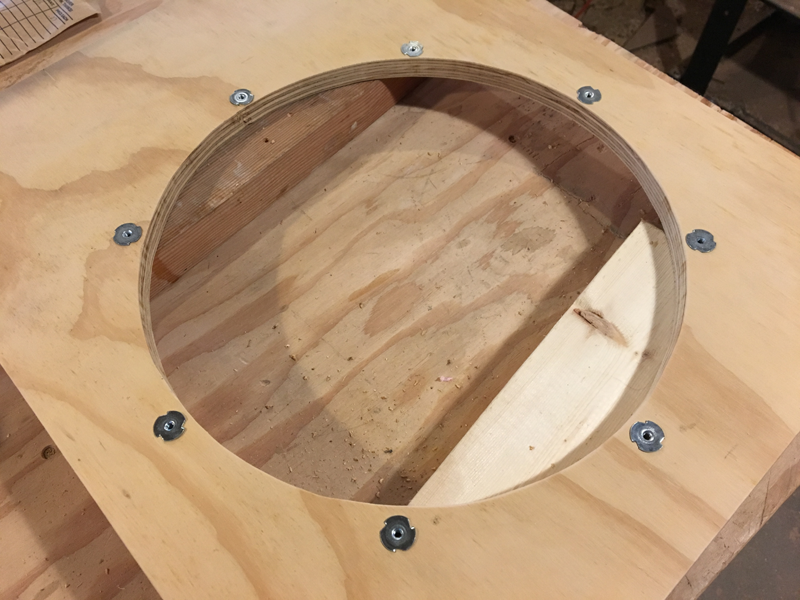
T-nuts on baffle board for speaker bolts
We then stapled on the grill cloth (a used piece from an old Fender amp - we may replace this with a new piece later, as this piece is a bit worn and creased), and mounted the speaker. Here is a mock-up with it in place:
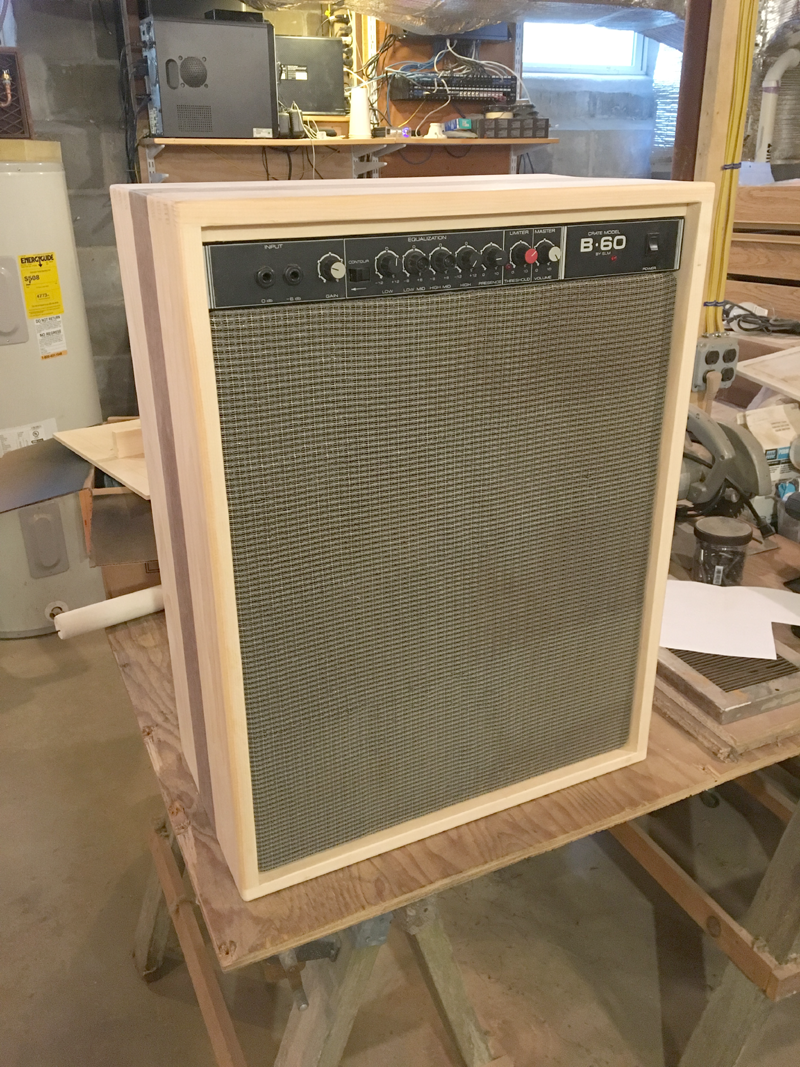
Chassis and Baffle board with grill cloth in place (mockup)
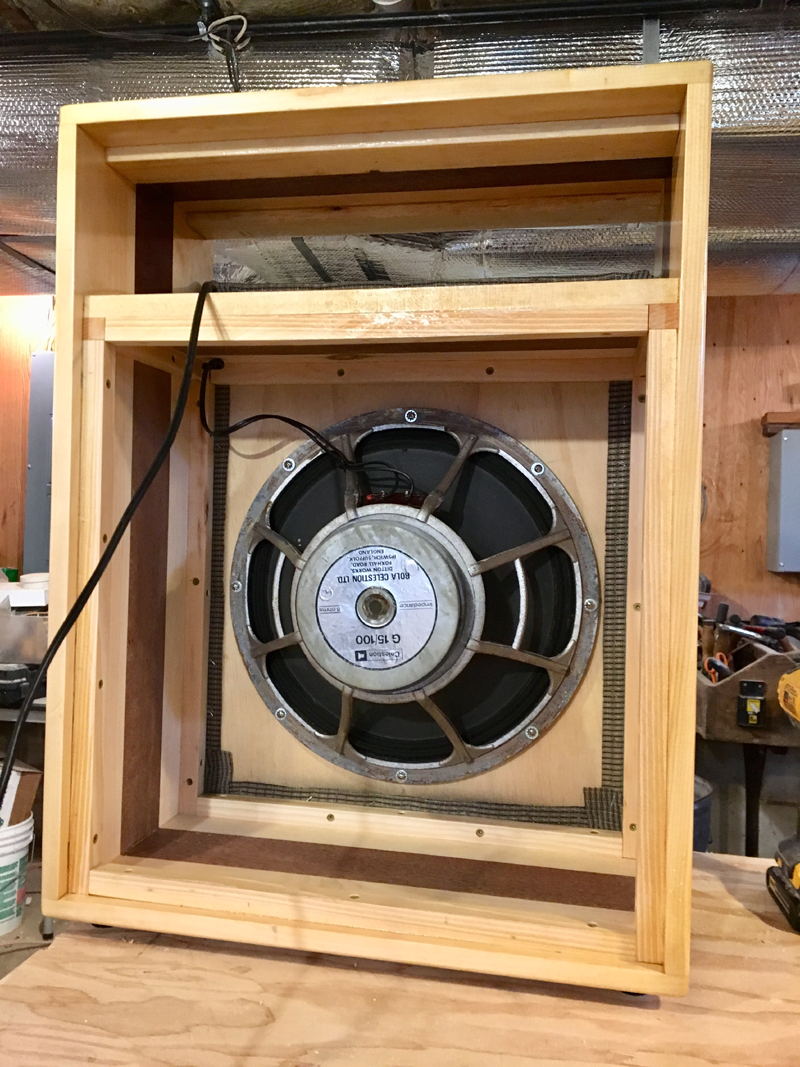
Mounted speaker with speaker wire running through hole in shelf
After we rounded the corners and did the final sanding, we gave the cab 3 coats of glossy Urethane as the final finish, then mounted the feet, handle, baffle board, back panel, and chassis (after cleaning the pots with contact cleaner). We also soldered a right angle 1/4" jack to the end of the speaker wire.
Once this was done, we decided that we needed some sort of panel behind the chassis so we could stuff the power cord back there, and have it not fall out when transporting the amp. One problem was that if we used a block of wood on the left side to attach the panel, the power transformer would not clear it if we wanted to remove the chassis. So, we used a hole and peg on the left side, and block of wood and screw on the right side, which seems to work well.
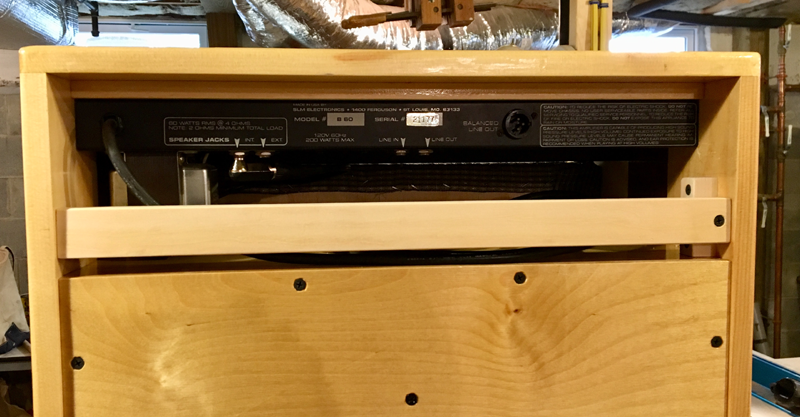
Panel to keep power cable stored
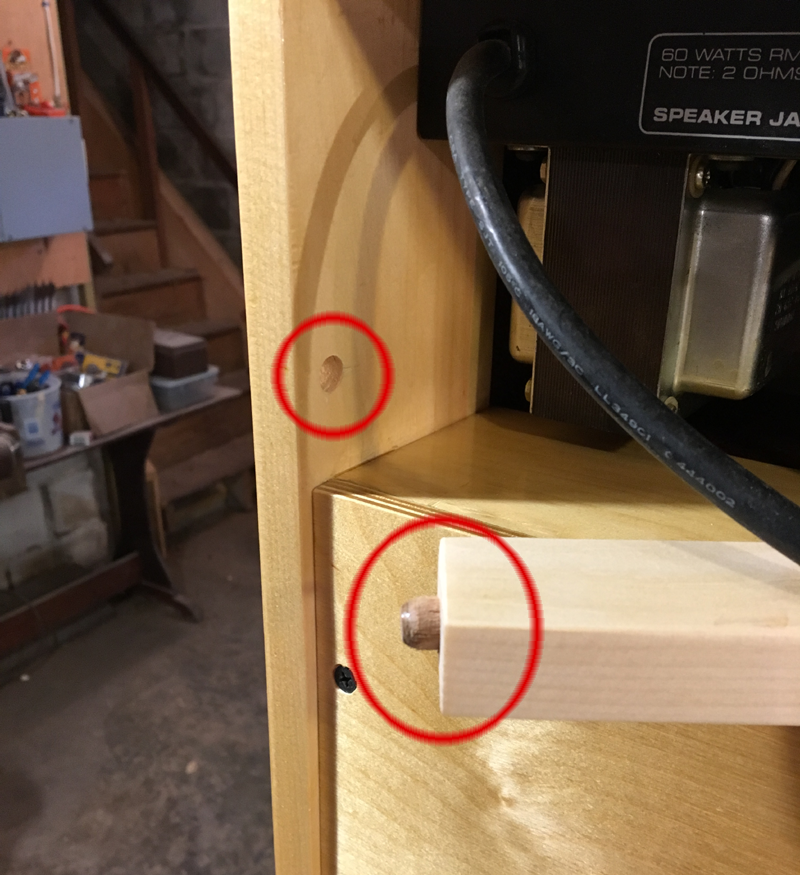
Detail of peg and hole for left side


